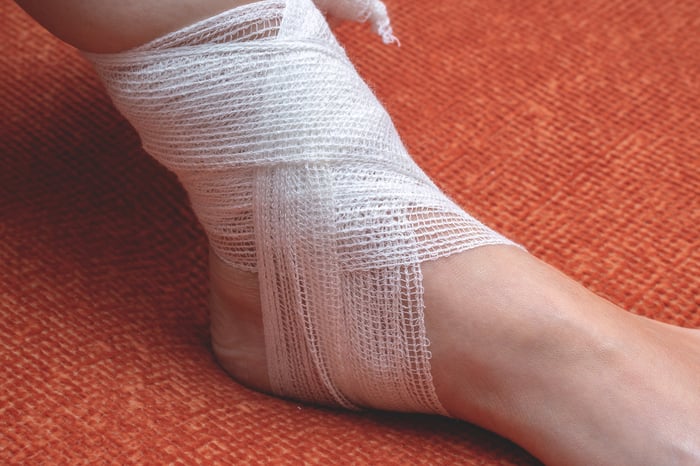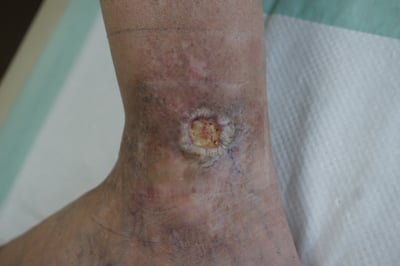What is a Venous Leg Ulcer and How Can I Treat It?

There can be many medical side effects and symptoms that stem from abnormal vein circulation. Common symptoms can range from leg swelling, aching, fatigue, and restlessness. Some of my patients, however, experience more unique symptoms that cause a great amount of discomfort in their day-to-day life. For example, venous ulcers that appear on the leg are very painful symptoms that derive from a vein condition.
In the video below, I go into more detail on what a venous ulcer is exactly, and how you can go about treatment:
For those dealing with these ulcers, it can be extremely frustrating because you are dealing with a skin sore that will not heal. Venous ulcers are unique in the fact that they do not want to heal like other skin sores because of the inflammation and pressure of the veins in the legs and foot. These sores become very red, and very inflamed and are to be treated seriously for them to heal.
 A venous leg ulcer commonly occurs on the lower leg near the ankle.
A venous leg ulcer commonly occurs on the lower leg near the ankle.
So, if you are struggling with venous ulcers or any of the other symptoms previously mentioned, a vein screening is a helpful next step. An ulcer in the lower leg can result from a few common causes: it may be the result of an artery condition, a vein condition, or a pressure sore. An examination of the location of the sore by a specialist will enable them to determine the likely cause. If a vein ulcer is suspected, the specialist will look at the area around the sore with ultrasound because an ultrasound will always show vein reflux at the site of the skin sore.
How to Treat Venous Leg Ulcers
So, when these ulcers occur, it is important to start treating them immediately. The great first step in treating venous ulcers is to use some type of compression on a daily basis. This and keeping your legs elevated throughout the day can help promote healing in venous skin ulcers. Many patients, the vast majority, in fact, see improvement and complete recovery from these kinds of sores simply from this first step, though it may take weeks and months to heal. Once the venous ulcer is healed, however, it is important to move forward with definitive vein treatment because 80% of people with a healed vein ulcer will have reoccurrence without a vein treatment.


